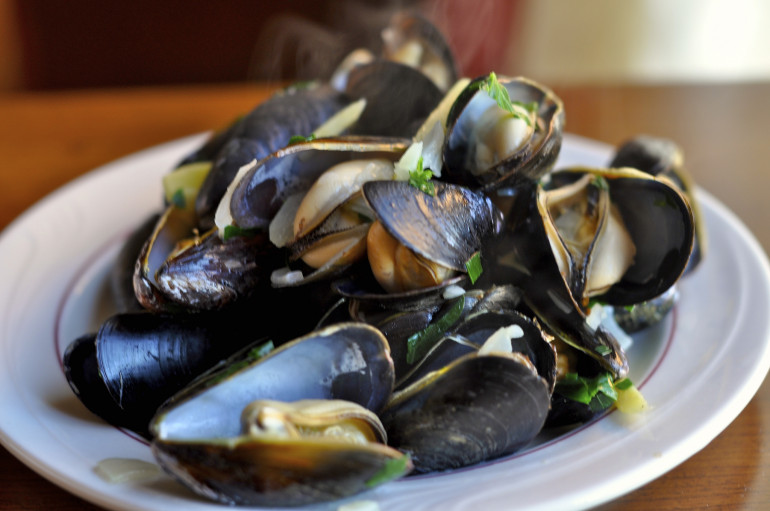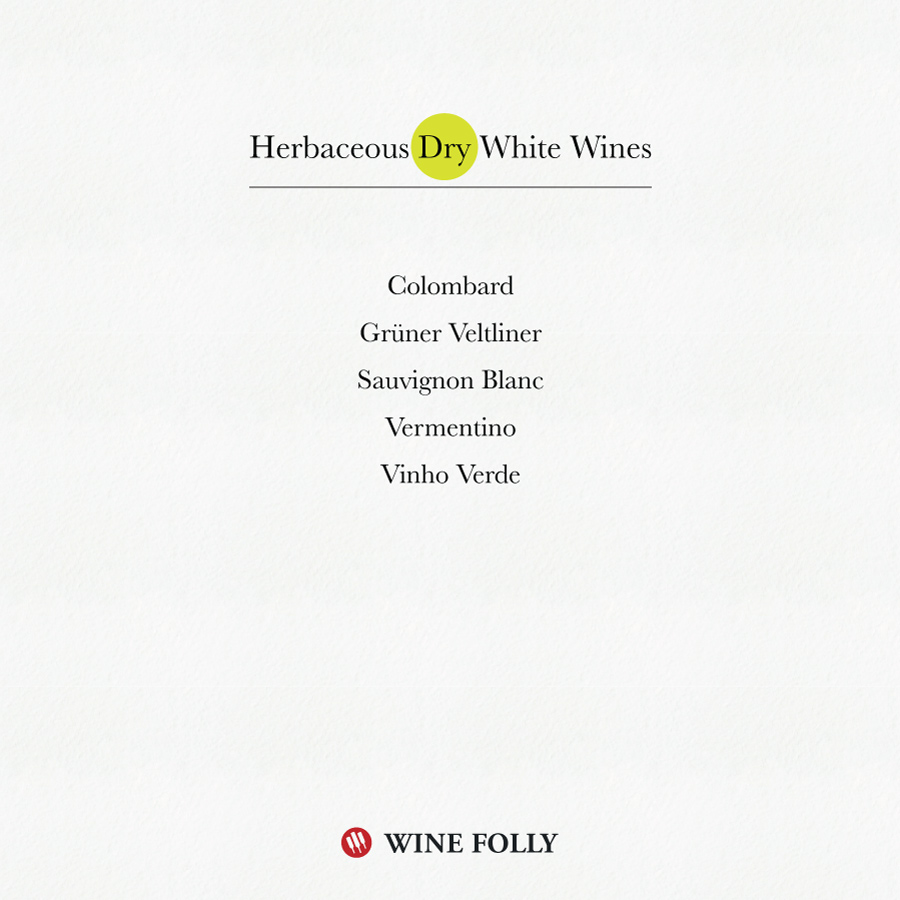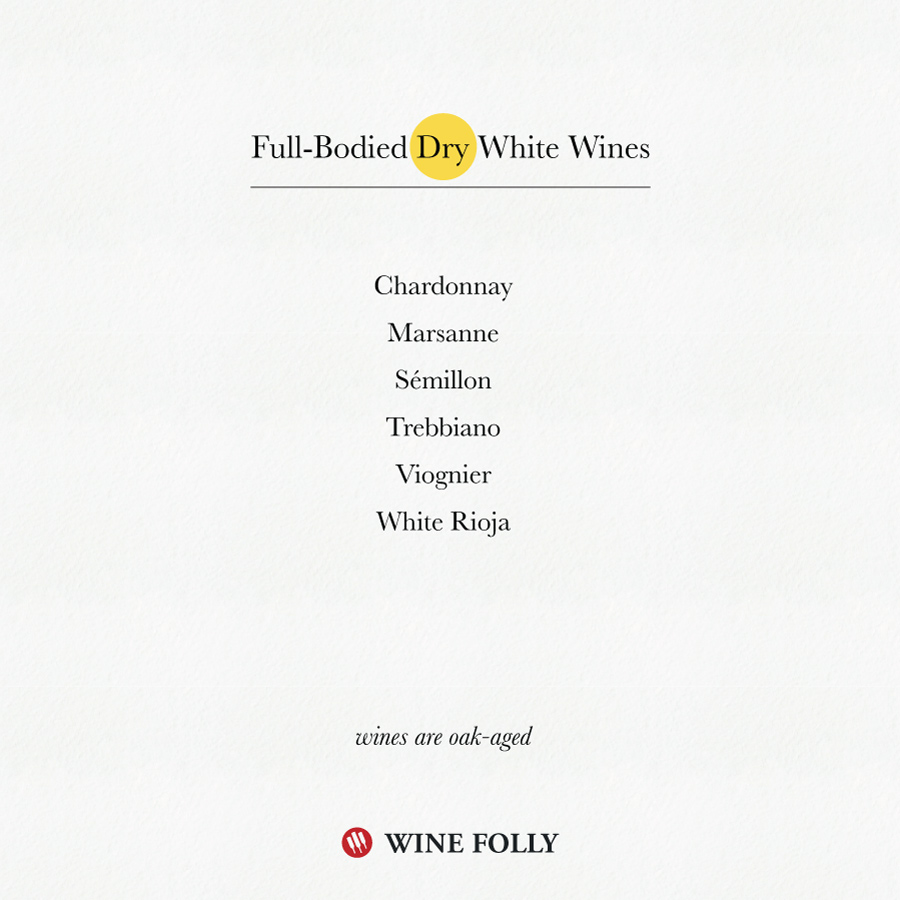Understand how to choose a dry white wine for cooking and find out about the 3 dominant styles of dry white wines. These white wines are anything but sweet.
An Intro to Dry White Wines
The sweet wine/dry wine myth
Most will say Riesling is a sweet wine and Sauvignon Blanc is a dry wine–traditionally, this is true. What’s interesting to note though, is whether a wine is dry or sweet has very little to do with the grape. A wine is made to be dry or sweet with winemaking.
- How dry wines are made: The grapes are crushed and fermentation continues until the yeasts eat all the available grape sugars and turn them into alcohol.
- How sweet wines are made: The grapes are crushed and fermentation continues until the wine has reached the desired sweetness level. Then, the winemaker stops the fermentation (usually with extreme chilling or filtration) to stop the yeast from making alcohol.
Light-bodied dry white wines

These are crisp and refreshing wines that focus on citrus flavors, zesty acidity and fruit. Light-bodied dry white wines are typically meant to be enjoyed young (say, within the first 1–2 years of the vintage date) to maximize their acidity and freshness. There are a few examples of white wines (primarily from the Old World, such as France and Italy) that will age for 10 years. Over time, the taste will become richer and softer and wines become deeper gold in color.
Cooking Options

Light-bodied dry white wines, from Assyrtiko to Pinot Grigio, are perfect for seafood or vegetable-based dishes. By James
Light-bodied white wines are the go-to option for cooking with wine due to their high acidity and citrus flavors–perfect for deglazing a pan. You’ll find these wines work best with seafood (oysters, clams, mussels and light flaky fish) and lighter, leaner dishes without cream. These wines are the perfect cooking wine with mussels and clams. If you’re looking for inspiration, check out a French regional wine called Muscadet (“mus-kuh-day”).
Herbaceous dry white wines

Sauvignon Blanc from New Zealand might just be the poster child of this wine style. Herbaceous, dry white wines offer up intensely green flavors of lime zest, passion fruit, green bell pepper and grass. Typically, you’ll want to enjoy this style of wine as youthful as possible to preserve its crunchy green freshness.
Cooking Options

Richer fishes and herbaceous dishes are accentuated with this style of white wine. By Ralph Daily
Another great option for all-around cooking and deglazing, especially with dishes that have fresh green herbs as a feature. Opt to use this wine for light-flaky fish, salmon, chicken and delicately flavored shellfish such as scallops. These wines are an excellent choice for making sauce Béarnaise.
Full-bodied dry white wines

Richer and full-bodied white wines that are made with the use of oak-aging offer more creamy and nutty flavors. The go-to variety in this style is Chardonnay, although producers continue to experiment with others. The key to finding this style is finding a wine made with an oak program.
Cooking Options

Richer, creamier soups, sauces and bolder white meats and fish are ideal with this style of dry white. By Gwen
This style of wine is not the usual choice for cooking for 2 reasons: it tends to cost more and it has lower acidity (usually requiring some other acid addition like lemon or vinegar). Still, full-bodied white wines do make a great choice for cooking baked dishes (soufflé) and cream-based dishes. For crazy nutty-rich option for cooking, definitely look into orange wines!

Get the Wine Folly book
A visual guide to wine with 230+ pages of infographics, data visualization and wine maps that simplifies the world of wine. Wine Folly: The Essential Guide to Wine is the perfect companion for exploring and becoming confident with wine.
